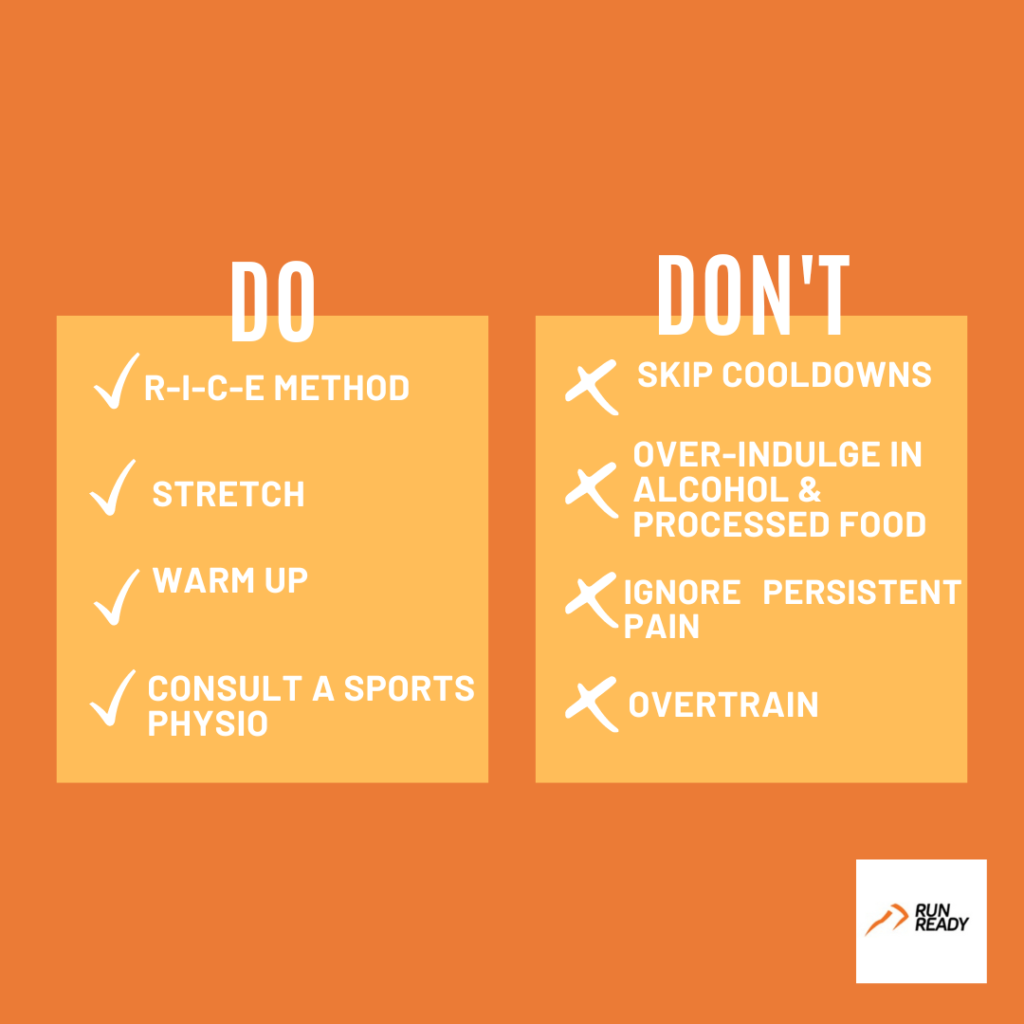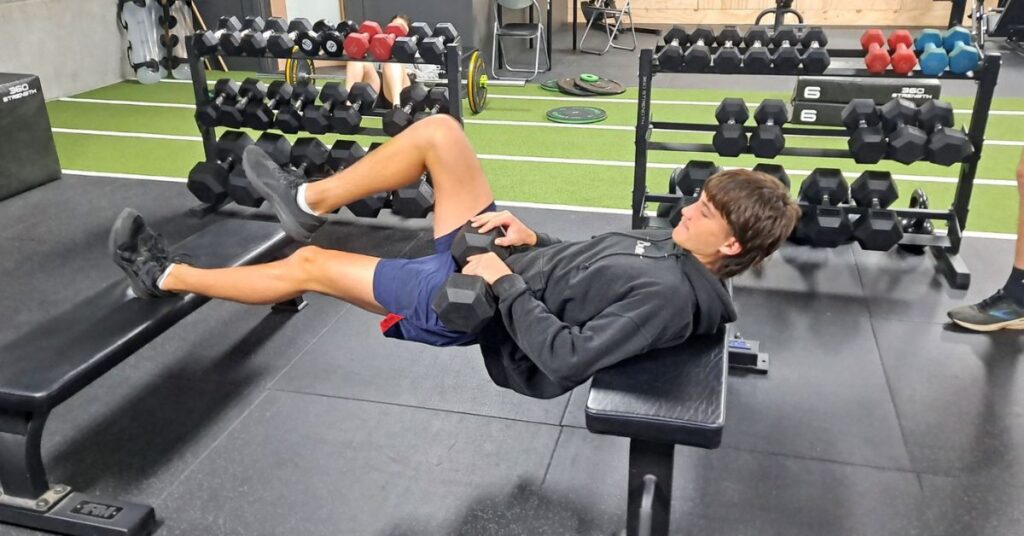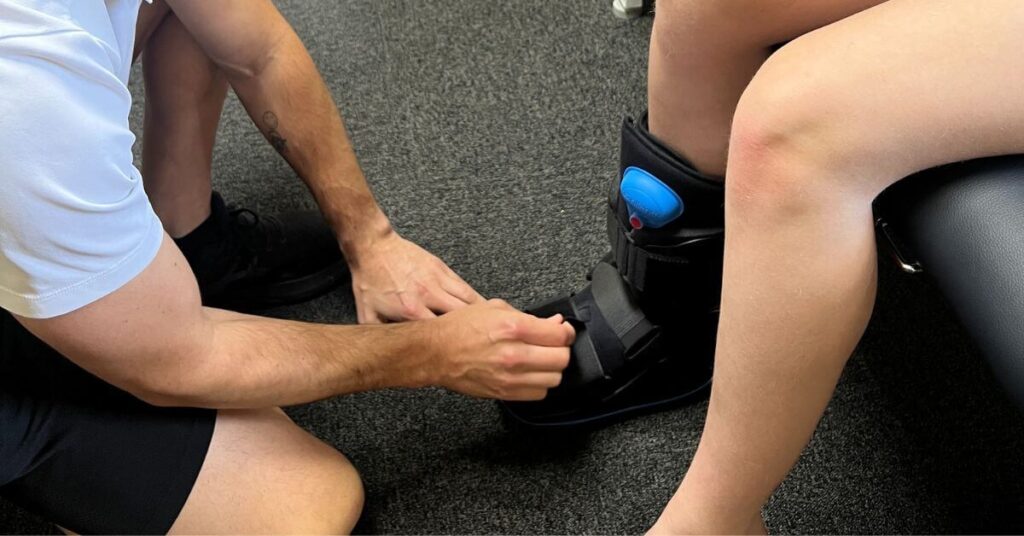How Do You Treat a Pulled Muscle?
Reading Time: 10 minutes and 7 seconds
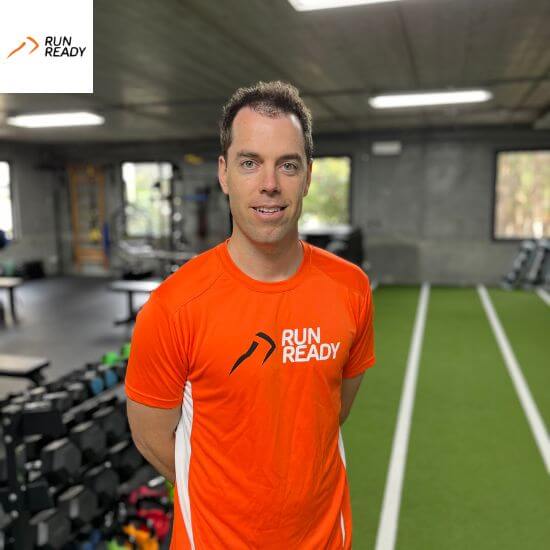
Richie Lynch
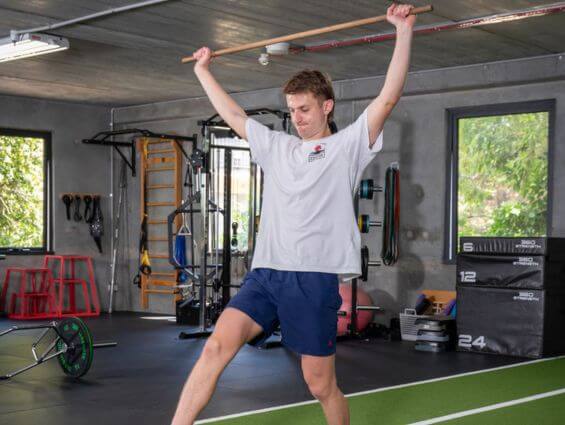
One of the most common things I have observed while treating clients is that muscle strains or pulled muscles don’t discriminate. It could affect anyone, regardless of age, intensity of sport or exercise, or gender! Throughout the many years I’ve spent helping my clients with their muscle strains, I’ve seen how it can delay your progress and affect your daily life.
I’m here to guide you through understanding, treating, and preventing pulled muscles. Whether you’re an athlete aiming to beat your personal best, a fitness enthusiast, or someone recovering from surgery, my goal is to provide you with actionable insights and knowledge to enhance your well-being and performance.
Table of Contents
What is the immediate treatment for pulled muscles?
RICE Method: Essential First Aid
When you pull a muscle, taking immediate action is crucial for a speedy recovery. I can’t stress enough the effectiveness of the RICE method as a first-aid response. The RICE method is a well-established first-aid technique used by many sports physiotherapists like myself and can be a game-changer in managing the initial stages of a muscle strain.
The RICE method is a time-tested strategy that stands for Rest, Ice, Compression, and Elevation. This four-pronged approach has proven effective in countless cases, like when one of my clients, Sarah, attempted a 5-kilometre run without prior training and ended up on the sidewalks after the first kilometre. How did I treat her?
- Rest: When Sarah called for me after pulling her calf muscle, I first told her to stop running. Continuing to move may worsen the pain and severity of the injury.
- Ice: I took Sarah aside and helped her apply ice to her pulled muscle for 20 minutes every 2 to 3 hours to reduce inflammation and pain.
- Compression: After I helped her ice the injured area, I applied compression by wrapping the bandage snugly to reduce the swelling and support the pulled muscle. Skipping this step can lengthen your recovery period!
- Elevation: Once her calf muscle was wrapped snugly, I told her to lie down to elevate her leg above her heart level. I used pillows to prop her up and keep her entire leg in an elevated position to reduce the blood flow to that area (which reduces swelling) and make her more comfortable.
Over-the-Counter Medication and When to Use It
When managing the discomfort of pulled muscles, reaching for over-the-counter (OTC) medication can be an effective step taken with the RICE method. Drawing from my professional experiences, I’ve observed how the right choice of OTC medication can not only provide significant relief but also accelerate the recovery process.
- Ibuprofen, such as Advil or Motrin, is my go-to recommendation for its dual action of reducing inflammation and alleviating pain. These nonsteroidal anti-inflammatory drugs (NSAIDs) can be effective in decreasing swelling and discomfort, setting the stage for a smoother healing process. In Sarah’s case, I told her to take some Ibuprofen if the pain became difficult to manage even after applying the RICE method. She told me it greatly helped in keeping her comfortable and assisted her in getting on the road to recovery faster. According to Harvard Medical School, there are even instances where you can take acetaminophen and ibuprofen together to provide better pain relief.
- Acetaminophen For those who cannot tolerate NSAIDs, acetaminophen (such as Tylenol) can be a viable alternative for pain management. While it does not address inflammation directly, it can provide relief from the discomfort associated with pulled muscles. I had a client, Sam, a football player, who couldn’t take ibuprofen because of stomach sensitivity and took Tylenol as an alternative to manage his pain.
- Topical Treatments I’ve also seen excellent results with topical treatments like creams or gels containing ingredients like methyl salicylate, capsaicin, or lidocaine. These can be particularly helpful for localised and temporary pain relief, allowing you to target the affected area directly.
OTC pain relievers like the ones mentioned previously can ease pulled muscle discomfort that hinders daily life or sleep. The best time to take them is immediately after injury, and consider taking them regularly for 3–4 days with food for optimal relief and faster healing.
When To Seek Professional Help
While over-the-counter medications and self-care measures can be effective in managing pulled muscle discomfort, there are instances where seeking professional help is a must. I’ve had so many clients who waited too long to get professional help, leading to longer and more costly recovery periods and even worsening conditions. Here are some signs that can tell you it’s time to call in the experts:
- Severe pain that’s persistent despite immediate first aid.
- Limited mobility in the affected muscle or joint.
- Persistent and worsening symptoms that go beyond a few days
- Signs of infection like redness, an area warm to the touch, or fever.
- Numbness or tingling of the injured muscle could be a sign of nerve damage.
- Recurring issues with the same muscle could suggest an existing chronic condition.
Early Prevention Can Save You
We had a client, Tim, who was an amateur football player who came to me because of a pulled hamstring. Even after diligently following the RICE method, he experienced persistent pain, swelling, and had much difficulty moving. This is when he decided to enlist my help. When I saw his injury, I knew immediately that this wasn’t a simple muscle strain. It was a grade II tear that needed a meticulous and custom-made injury rehabilitation program. Because he addressed the issue immediately, I was able to start sports physiotherapy quickly and focus on pain management while gradually rebuilding his strength through appropriate exercises.
If Tim had brushed off his symptoms and insisted on self-treatment, his grade II tear could have escalated into surgery or developed into a chronic issue. This highlights the importance of acting quickly and seeking our help to prevent further damage. Remember, the goal is not just to return to your activities but to do so with confidence and strength, minimising the risk of future injuries.
Do’s and Don’ts to Maximise Pulled Muscle Treatment
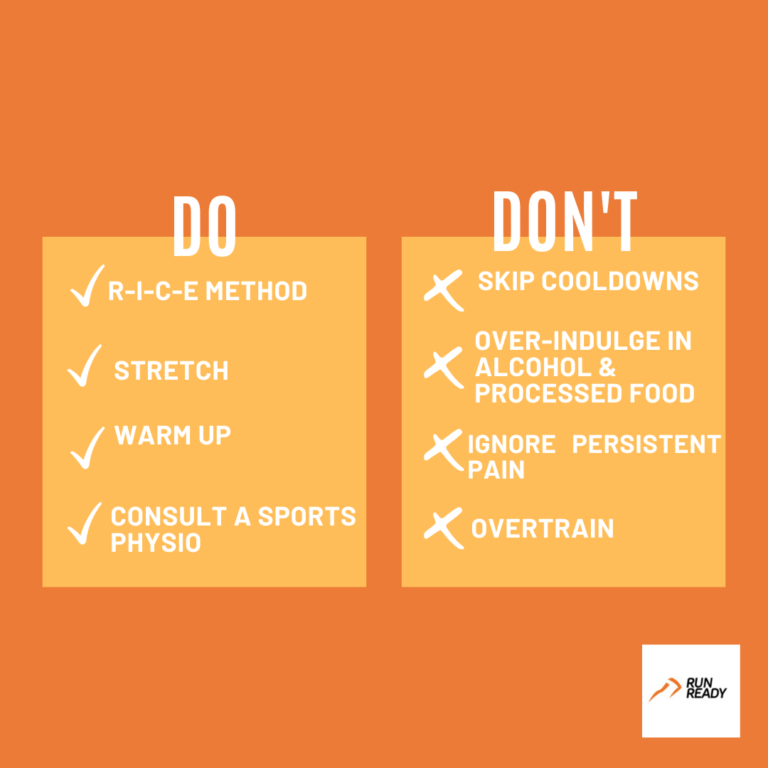
Are muscle strains and pulled muscles different?
In my years of working with athletes and individuals from all walks of life, I’ve frequently encountered the question: “Are muscle strains and pulled muscles different?” In short, the terms ‘muscle strains’ and ‘pulled muscles’ are often used synonymously in both professional and casual conversations, yet understanding the nuances between them can significantly impact recovery strategies.
At their core, muscle strains and pulled muscles are essentially the same injury; they both involve damage to the muscle fibres or the tendons attached to the muscle. The term “pulled muscle” is often used colloquially to describe a muscle strain of moderate severity (grade 2). On the other hand, ‘Muscle strain’ is an umbrella term that covers a spectrum of severity, classified into grades 1 through 3.
In such cases as Tim’s, it’s crucial to differentiate between a pulled muscle and a more severe muscle strain to ensure appropriate treatment. Although both conditions can benefit from immediate first-aid treatment, a more severe muscle strain may require additional medical care, such as surgery and physical therapy.
Who’s most prone to muscle strains?
To put it simply, everyone can strain a muscle! This injury isn’t only limited to athletes and fitness buffs; it can affect anyone. The risk of injury increases when you increase your activity, have improper conditioning, muscle fatigue and imbalance, engage in repetitive movement, and can strike anywhere at any given time. Prevention, including proper warm-ups and maintaining muscle strength and flexibility, is key, as is seeking early intervention for any injuries.
What are the most common symptoms of muscle strains?
In the years I have worked treating numerous injuries at the clinic, I’ve seen different cases of pulled muscles and muscle strains caused by sudden movements, overuse of the muscle, or repetitive strain. ranging from mild to severe. Just like in Tim’s case I mentioned earlier, injuries can happen to anyone, and it pays to know the symptoms to get early prevention and treatment.
What to Expect If You Pull a Muscle
- Pain or Tenderness: Tim found it even harder to walk immediately after his injury. Pain is often the first sign of a muscle strain.
- Redness or Bruising: Accompanied by pain, I noticed Tim’s injured area was redder than the areas around it.
- Limited Motion: I saw that Tim could barely walk without groaning in pain when he arrived at the clinic. Swelling and discomfort can severely restrict movement.
- Muscle Spasms: These come in waves, can be painful, and can catch you off guard.
- Swelling: Tim’s hamstring almost doubled in size due to the accumulation of fluid in the tissue. I could see a huge difference in his left and right hamstrings!
- Weakness: When you have a strained muscle, it’s often difficult to move or use the area.
To better understand the severity of muscle strains, I often categorise the symptoms based on their intensity:
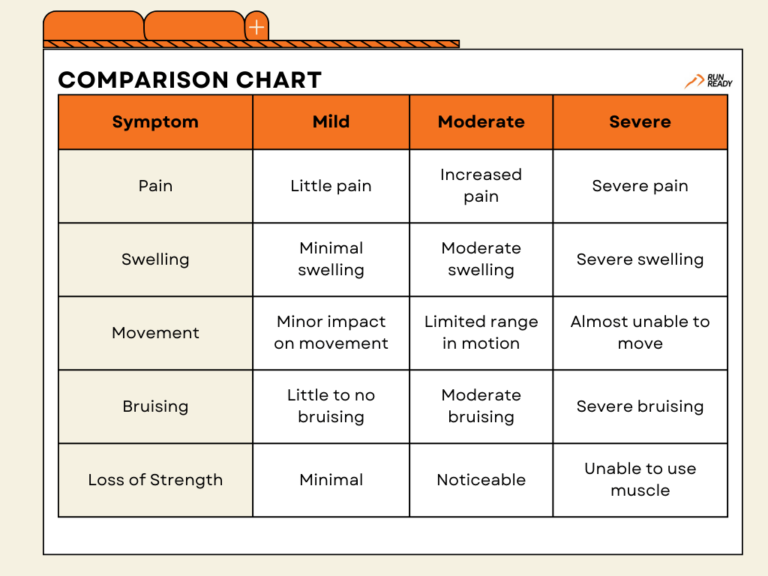
What’s causing my pulled muscle?
People often ask me what’s causing their muscle strain. I always tell them that there are many reasons why you end up with a pulled muscle, and here are some of the most common ones:
- Overstretching: Yes, there is such a thing as overstretching! I’ve told my clients time and time again that a proper warm-up is key to avoiding this.
- Overexertion: I understand how eager you are to push limits to reach your goal, but pushing your body too hard and too fast can cause a strain on your muscles. For example, lifting weights you’re not trained for can easily cause a lower back strain.
- Repetitive Motion: This doesn’t just apply to athletes. I’ve seen office workers develop strain from repetitive tasks like typing and mouse use.
- Sudden Movements: Sudden movements, like changing directions too quickly, can cause pulled muscles.
- Poor Conditioning: Lack of proper strength or flexibility can leave muscles vulnerable. A client of mine, new to yoga, found this out the hard way, straining her back due to insufficient core strength.
- Fatigue: Overused and tired muscles are susceptible to injury. This is why I encourage enough rest during treatments and rehabilitation.
- Muscle Imbalance: When one group of muscles is stronger than its opposing group, it can lead to overcompensation and strain on the weaker muscle. If you’re a runner who focuses solely on building strong quads and fails to strengthen the hamstrings, your quads might pull you forward efficiently, but your weaker hamstrings could struggle to keep pace and end up strained from being overextended during each stride.
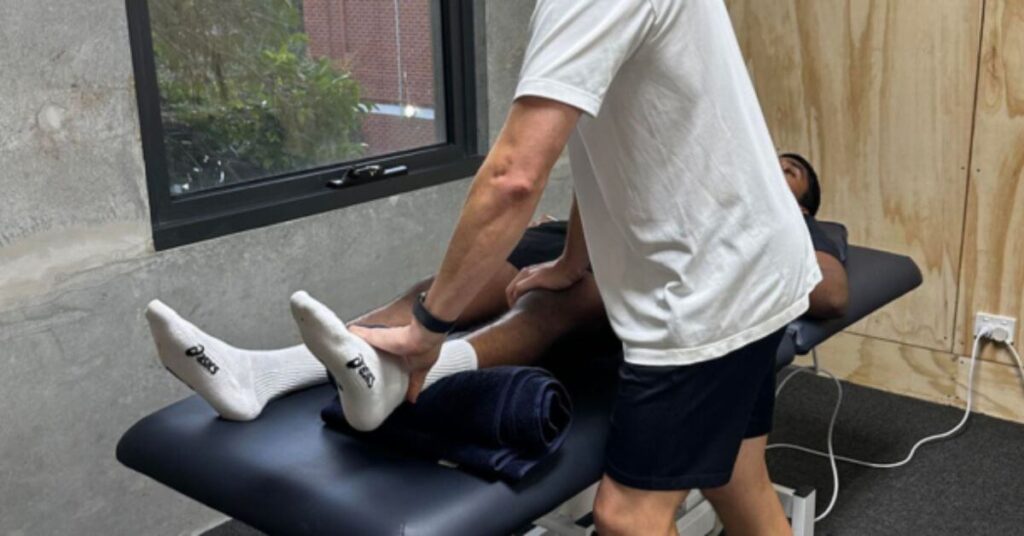
According to a 2022 study by AusPlay, a whopping 18.27 million Australians aged 18 and over participated in some form of sport or physical activity in the past year. That’s a significant chunk of the population staying active! Even better, the vast majority (80%) enjoyed their active pursuits injury-free. However, it’s important to be aware of potential risks. The study also found that 3.47 million Australians (19% of participants) experienced some kind of injury during their physical activities in the previous year.
What tests are used to diagnose a muscle strain?
When patients come to me with symptoms such as pain, swelling, and limited range of motion, it’s crucial to investigate the extent of the injury through various diagnostic tests because it helps me map out an effective treatment plan to get you back on track! My experience in sports physiotherapy has given me a firsthand look at the diagnostic journey, from the initial consultation and physical exam to the use of advanced imaging technologies. This streamlined process assists me in identifying your injuries and addressing any questions you might have about them.
- Physical Examination: At Run Ready, I conduct an initial consultation and a thorough physical examination as the first steps in a diagnosis. It includes checking for visible signs of swelling, assessing tenderness, and understanding the functional limitations caused by the injury. This lays the groundwork for the entire investigation because those observations set the direction for any further tests I might need. I had a client, Ben, who was currently weightlifting, who dropped by my clinic with a suspected shoulder strain. Although my initial examination showed minimal swelling, his persistent pain when doing specific movements pointed otherwise, as shown through more advanced diagnostic tools.
- Ultrasound: One of the most common diagnostic tools used, this non-invasive test can reveal tears or fluid buildup around the strained muscle, providing valuable information about the extent of the damage. There are countless studies on the accuracy of ultrasound in diagnosing muscle and ligament tears.
- MRI: When ultrasounds become inconclusive, I then opt for a more comprehensive view of the muscles and tendons through the MRI. An MRI can provide detailed imagery, checking for blood clots, tears, or internal bleeding in the injured area.
One clear example of this is Chris, a young basketball player who visited me because of a knee injury. While the initial examination clearly showed swelling and pain, I couldn’t pinpoint the exact location of his knee pain. To get a clearer picture, I ordered an MRI scan, where it was revealed that Chris had a tear in his ACL.
How long does a muscle strain last?
As I have mentioned earlier, muscle strains and pulled muscles are very common injuries, sports-related or not. Albeit their commonality, muscle strains don’t have a fixed timeline in terms of the period of healing. The fact is, your healing period is relative to the severity of your strain and your body’s response to the treatment I design for you.
How long does it take before I feel better?
- Grade I strains, which are mild and involve minimal damage to the muscle fibres, typically heal within a few weeks. With proper rest and care, most patients can expect to recover from a grade I strain within 2-4 weeks.
- Grade II strains are more severe, involving a greater number of torn muscle fibres but without a complete rupture. These types of strains can take up to 3 months or longer to fully heal, as the body needs more time to repair the more extensive damage.
- Grade III strains are the most severe, with a complete rupture of the muscle or tendon. In these cases, recovery may require surgical intervention and months of rehabilitation. The healing process can take anywhere from 3–6 months or longer, depending on the specific muscle involved and the patient’s dedication to the rehabilitation process.
Are there risks in pulled muscle treatment?
While pulled muscle and muscle strain treatments are generally safe and successful (from the countless individuals I have helped with recovery), it’s also important to recognise the risks of not managing them correctly. Let me give you a rundown of these risks:
As an expert sports physiotherapist, I’ve guided countless individuals through the recovery process from pulled muscles. It’s crucial to understand that while the treatment for a pulled muscle is largely safe, there are inherent risks if not managed correctly.
- Overuse of Pain Medication: One of the most common issues I have seen is the reliance of the patient on painkillers. As the saying goes, take everything in moderation. I always reinforce and remind my patients to use painkillers only when needed (and using the right dosage) to avoid side effects and possible dependency.
- Ice Pack Injury: Applying cold compresses to injured areas is also good, but like other treatments, I remind my patients to use ice packs correctly. I had a client who complained to me about skin damage from leaving an ice pack on his bare skin for too long, which resulted in a skin burn.
- Re-Injury: I know that you’re probably more than eager to get back to full activity, even before the muscle has fully healed. But, be patient! Getting back to your regular exercise routines quicker than you’re supposed to only leads to bigger injuries and, possibly, chronic issues.
- Improper Use of Compression: As with the use of ice packs, applying compression must be done correctly to reap the benefits. It’s a balance I often discuss with my patients, ensuring they’re using compression effectively without impeding circulation.
- Delayed Healing: Trust the process and don’t rush! Rushing the healing process can lead to prolonged issues and delayed healing. One of my client’s eagerness to return to sport without adequate rest resulted in extended recovery time due to not allowing the muscle to heal properly.
- Surgery Risks: The risk of undergoing surgery only applies to severely pulled muscles and muscle strain injuries. Going under the knife could place you at risk for infections and anaesthetic complications. This is why you should leave the course of treatment to qualified, experienced, and expert medical professionals.
When should I go to the ER?
Don’t ever make the mistake of brushing off pulled muscle pain, especially if it doesn’t get any better! If you notice more symptoms other than pain and feel like not even the RICE method and pain relievers are working, you have limited mobility, numbness, visible redness, swelling, or bruising, and a fever, it’s critical to seek immediate medical attention at the emergency room (ER). Ensuring swift and appropriate treatment is essential for your health and recovery.
What should I ask the doctor about my pulled muscle?
Preparing For Your Doctor’s Appointment
For your doctor’s appointment regarding pulled muscle treatment, consider taking note of the following before your appointment:
- Note when symptoms began, how long they’ve lasted, their intensity, and what increases or eases the pain.
- List past injuries, surgeries, or relevant health conditions.
- Record all current medications, supplements, and over-the-counter drugs you have taken.
- Jot down questions or concerns about your condition or available treatment options.
- Note any treatments you’ve tried
- Explain how the injury impedes daily activities
- Prepare insurance forms (if needed)
- Bring referral note (if you were referred by another doctor)
Questions to Ask
When consulting with a doctor about a pulled muscle or muscle strain, arming yourself with the right questions is key to navigating your recovery journey effectively. Here are some essential questions to ask:
- What grade is my muscle strain?
- What self-care measures should I follow?
- Do I need medication?
- Should I see a physical therapist?
- What exercises can I do to strengthen the muscle?
- When can I return to normal activities?
- Are there any signs of complications I should watch for?
- Could this be related to an underlying health issue?
- How can I prevent future muscle strains?
- Is follow-up necessary?
Speaking from years of experience as a sports physiotherapist, I firmly believe that the key to recovering well from a pulled muscle strain is taking a comprehensive approach. Understanding the severity, following appropriate RICE protocols, managing medication needs, and exploring physical therapy exercises can significantly affect the timeline and quality of your recovery. It’s also crucial to know when you can safely return to activities and what signs of complications to watch for. Sometimes, frequent strains could hint at an underlying health issue, so discussing the relationship between your injury and overall health with a sports physio or medical professional is vital. Preventative measures and the necessity for follow-up visits should also be discussed and taken into consideration with your healthcare provider. Applying a comprehensive strategy in treating your muscle strain not only facilitates your recovery but also empowers you to proactively manage your health, avert future injuries, and sustain an active way of life.


